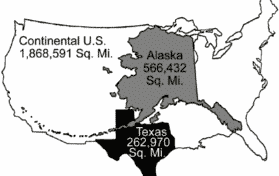
The divorce rate in America has been a topic of discussion and research by many scholars. Divorce rates are an indicator of the structure of society, economy, culture of marriage, and culture of divorce. This paper gives an overview of the current divorce rate in America, as well as historical trends, causes, and comparisons with other countries. By delving deep into the data for the underlying reasons that cause divorce, hoping to help shed light on this very important social issue and give valuable insights to individuals, policymakers, and researchers at large.
What Is the Current Divorce Rate in America?
The current divorce rate in America is about 2.7 per thousand of the civil population, the latest statistics show. This has been on the decline for the last few decades with the change in social attitudes, economic conditions, and changing perspectives toward marriage. It considers factors like age, education, income status, and cultural factors that affect the divorce rate. Refer to our detailed article about the divorce rate in America today for more insight and in-depth analysis of information.
Trends over the History and Recent Statistics
Evolution of Descriptive Divorce Rates in America: The divorce rate in America has varied much over the 20th century. In the first decades of the 20th century, divorce was rare, but it started climbing during the post-World War II period. There was a big increase in the 1970s related to changes in divorce laws and social attitudes. Since then, there has been a gradual decrease, and it is now very near to 2.7 per thousand people. Evidence for these trends will be presented in the country’s historical context, with an in-depth analysis of the trends reserved for this section that follows.
Factors Explaining the Changes in Divorce Rates: A number of varied changes in divorce rates over the years have been influenced by several factors. These are economic in nature, legal in aspect, cultural, and those relating to gender roles in society. In relation, for example, the no-fault divorce laws enacted in the 1970s, which made divorces easier to be granted, saw a temporary rise in divorce rates. Along these lines, economic recessions have seen lower rates of divorce because, in such cases, divorce would prove financially difficult for the couples involved.
Statistics of the Current Divorce Rate: 2.7 per 1,000 People: The current divorce rate of 2.7 per 1,000 people is significantly down from a high in the late 1970s and early 1980s. This section will provide the most up-to-date statistics on this very subject, ranging from differences by state and age group to other demographics. Knowing this information explains a greater portrait of what marriage and divorce look like in America at this time.
Comparisons with Global Divorce Rates: Comparing the divorce rate in America with that of other countries, the United States falls somewhere in the middle. Other countries have a considerably higher rate of divorce, while several others enjoy a lower rate than the U.S. The section will discuss these comparisons and the cultural and legal differences that have shaped the global divorce landscape.
Impact on Society: It also has far-reaching impacts on society, right from the people to their families and communities to the economy. This part of the outline will discuss these impacts, including the psychological effects on children and adults, economic consequences, and the broader social implications of divorce.
Future Projections and Trends: Estimating future trends in the divorce rate involves assessing current trends coupled with any possible shift in societal attitude, economic conditions, and legal frameworks. The last part of this subsection of Outline 1 will provide an insight into what the future might bring for divorce rates in America.
Causes and Factors Influencing Divorce Rates
Socioeconomic Factors
The other critical determinant of divorce rates is socioeconomic status. Generally, low-status individuals are always under heavy financial stress, which sometimes may rock their marriages. This section will explore the relationship between income, education, and divorce rates.
Upbringing and Marriage Duration
Other of the more important variables include age at marriage and number of years married. Couples marrying young have higher divorce rates, and those marrying later or staying together longer have more stable marriages.
Cultural and Religious Influences
This is equally influenced by cultural and religious beliefs. High affiliation with religion or traditional cultural beliefs usually leads to a reduced divorce rate. We examine in this section how these factors have influenced marital stability.
Legal Reforms and Policies
Changes in divorce laws, specifically the enactment of no-fault divorce, have historically impacted divorce rates. Divorce rates have been manipulated by legal reforms throughout history, making this section particularly relevant to discussing how legal reform has influenced today’s American divorce scene and what legal changes of the future may mean for these numbers.
Modern Relationships and Social Media
Modern relationships and social media’s intervention have established new relational dynamics in marriages. Online ease of connecting with people and exposure to other lifestyles lower marital satisfaction and stability.
Psychological and Emotional Factors
The second important consideration in marriage stability is the aspect related to mental health and emotional well-being. This would include all those variables that define themselves, such as depression, anxiety disorders, or even personality disorders, all of which can contribute to the break-up of marriages. In this section, some psychological factors affecting divorce rates will be discussed.
Role of Marriage Counseling and Support Systems
The role that professional marriage counseling can play in preventing divorce is very significant. Professional counselors expertly guide couples through such a maze of problems, enabling them to communicate better and rebuild lost trust. The next section shall deal with the effectiveness and success rates of marriage counseling.
These support systems include community programs, religious organizations, and cyberspace programs that help the couple to overcome marital problems. This section will analyze the different types of support and occasions when they have proven successful in not contributing to a divorce.
Examples of real people who overcame marital problems through counseling and support systems are relevant. This chapter will include some of those stories and what can be learned from them.
Although most couples do have the availability of support systems, the majority are still not willing to get help for themselves due to many reasons, such as stigma, lack of knowledge, or financial constraints. This part will discuss such barriers and recommend ways that will prompt more couples to seek assistance.
Support systems have enormous potentials in bringing down the divorce rate by equipping couples with the appropriate tools and skills in enhancing the marital relationship. This section will examine how effective support systems reduce divorce rates.
In the future, integration of new technologies, increasing access to resources, and a focus on the importance of mental health and relationship education will be integrally linked to the evolution of support for marriages. In conclusion, the final section will examine potential future developments within marriage support systems.
Role of Marriage Counseling and Support Systems
- Importance of Marriage Counseling: Marriage counseling can be a key factor in the survival of marriages from divorce. Professional counselors can help couples work out their problems, improve communication, and learn to trust each other once again. This section will examine the benefits and success rates of marriage counseling.
- Forms of Support Systems Available: A good number of different support systems, community programs, religious organizations, and even online resources, alleviate the couple of relief when dealing with marital problems. This section will examine the types of support that are available and how successful such programs are in preventing divorce.
- Case Studies of Successful Interventions: Real-life examples and case studies of couples who have gone through marital crises and came out of them through professional counseling and support systems are very informative. This section is going to share a few such stories and lessons learned from them.
- Barriers to Seeking Help: Although there are support systems in place, most couples still shy away due to the stigma, lack of awareness, or financial issues involved. This part will now consider discusses some of the obstacles and in what ways more couples can be encouraged to seek assistance.
- Impact of Support Systems on Divorce Rates: It is in this respect that support systems can play a very major role in bringing down divorce rates by providing married couples with the “wherewithal” to survive marital problems. This section examines how effective support systems lower divorce rates.
- Future Directions of Marriage Support: The future of marriage support will lie in the integration of new technologies, the expansion of access to resources, and mental health and relationship education. In this final section, several conceivable developments in the marriage-support systems are considered.
Conclusion
The divorce rate in America, though not as high as in the interceding decades, is nonetheless a very pertinent social issue. Knowing the trends—from socioeconomic background to legal reforms—orders a more distinct view of marital stability in the country. Regional variations, the role of support systems, and other causes of divorce help in building a better understanding of how to foster and strengthen marriages in America.
Frequently Asked Questions
Q. What is the present divorce rate in America?
A. The current divorce rate in America is approximately 2.7 per 1,000 people.
Q. What are the major causes of divorce in America?
A. The major causes of divorce in America are financial stress, adultery, broken communication, domestic violence, substance abuse, and unrealistic expectations from partners.
Q. How do socioeconomic factors impact divorce rates?
A. These include income, education, and financial stability. Many research studies have shown that the divorce rate of lower-status people is higher.
Q. Does marital counseling have the power to reduce divorce rates?
A. Yes, marriage counseling does help in reducing divorce rates by improving communication, resolving conflicts, and rebuilding trust between two persons involved in a relationship.





